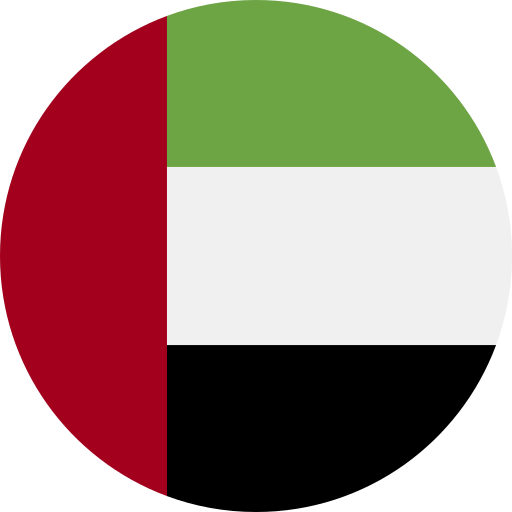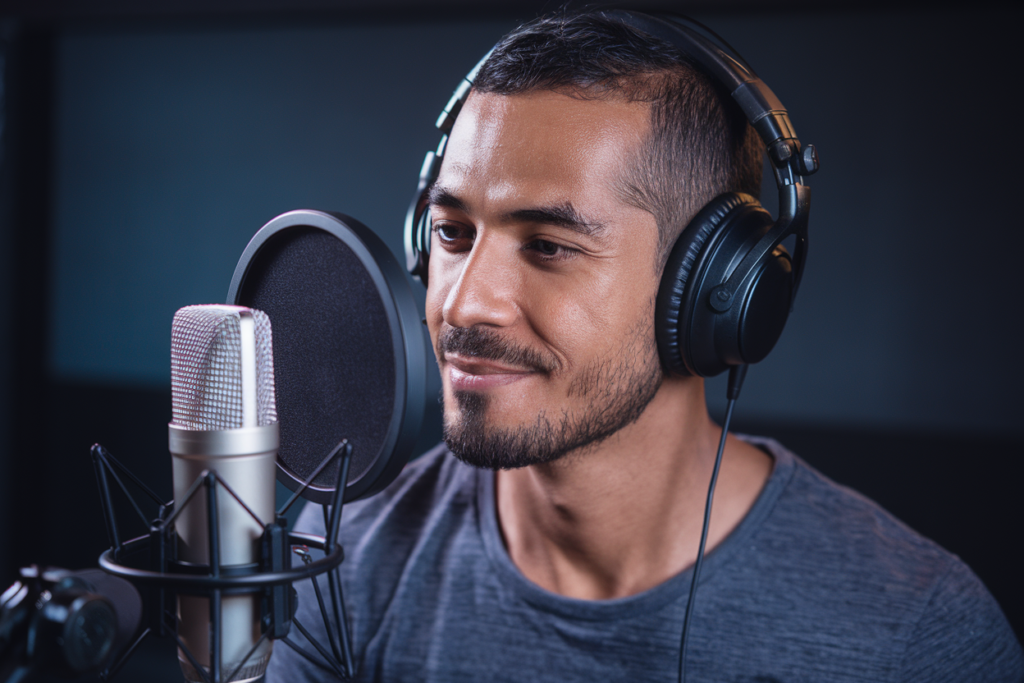Key Takeaways
- Historical Roots: Arabic language evolution began with its Semitic origins around 500 BCE, transitioning through ancient scripts to the recognizable Arabic script today.
- Classical Arabic Significance: The emergence of Classical Arabic in the 7th century unified Islamic territories and influenced literature and science, establishing grammatical norms still relevant today.
- Cultural Influences: Trade and cultural exchanges enriched Arabic vocabulary, incorporating elements from Persian, Greek, and other languages as well as modern borrowings due to globalization.
- Dialectal Diversity: Major dialects like Egyptian, Levantine, Gulf, Maghrebi, and Iraqi reflect regional identities shaped by historical and social influences while maintaining distinct linguistic features.
- Technological Impact: Digital communication platforms foster rapid language evolution by blending dialects and introducing new vocabulary, significantly shaping contemporary usage of Arabic.
- Future Adaptation: Efforts to preserve both Classical forms and regional dialects continue alongside predictions of increased integration with English terms due to ongoing globalization.
Have you ever wondered how the Arabic language has evolved over centuries? From its ancient roots to modern dialects, Arabic’s transformation is a fascinating journey that reflects cultural shifts and historical events.
Historical Overview of Arabic Language
The Arabic language has a rich history that reflects its evolution through various eras and cultures. Its transformation from ancient times to modern dialects showcases the influence of historical events and cultural exchanges.
Early Beginnings
Arabic traces its roots back to the Semitic languages spoken in the Arabian Peninsula. The earliest forms can be found in inscriptions dating back to around 500 BCE. These early stages used a script derived from Nabataean, which later evolved into the Arabic script we recognize today. As tribes migrated and settled, they contributed dialectal variations that laid the groundwork for future developments.
Classical Arabic Language
Classical Arabic emerged during the 7th century with the revelation of the Quran. This form established grammatical rules and vocabulary standards, serving as a unifying linguistic force across Islamic territories. Scholars emphasized its importance, leading to a flourishing of literature, poetry, and science in this period. The expansion of trade routes facilitated interactions among diverse cultures, further enriching the language’s lexicon while influencing regional dialects.
Understanding this historical context enhances appreciation for contemporary forms of Arabic as well as their broader cultural significance over time.
Influences on Arabic Language
Arabic has undergone significant transformations influenced by various cultural and historical factors. Understanding these influences provides insight into the language’s rich tapestry.
Cultural Exchanges
Cultural exchanges played a crucial role in shaping the Arabic language. Trade routes connected Arab merchants with diverse civilizations, facilitating the exchange of ideas, goods, and languages. The Silk Road and maritime trade brought Persian, Greek, and Indian elements into Arabic vocabulary and syntax. These interactions enriched the language, enabling it to adapt and incorporate new expressions that reflect broader cultural contexts.
Linguistic Borrowings
Linguistic borrowings have also significantly impacted Arabic’s evolution over time. As empires expanded and cultures mingled, Arabic absorbed words from neighboring languages such as Turkish, French, Spanish, and English. For instance, modern Standard Arabic includes numerous borrowed terms related to technology and science due to globalization. This adaptability showcases how Arabic continues to evolve while remaining rooted in its Semitic origins.
By exploring these influences—cultural exchanges and linguistic borrowings—you gain a deeper understanding of how the Arabic language reflects not just historical events but also ongoing social dynamics across regions.
Dialectal Variations
Arabic features a rich tapestry of dialects that reflect the language’s evolution across different regions. These dialectal variations arise from historical, social, and geographical influences, creating distinct forms of Arabic spoken today.
Major Arabic Dialects
Major Arabic dialects include Egyptian, Levantine, Gulf, Maghrebi, and Iraqi. Each dialect boasts unique vocabulary and pronunciation influenced by local cultures. For instance:
- Egyptian Arabic: Widely understood due to Egypt’s media presence; it’s characterized by specific slang and phonetic shifts.
- Levantine Arabic: Spoken in Lebanon, Syria, Jordan, and Palestine; it incorporates elements from various languages due to historical trade routes.
- Gulf Arabic: Found in Saudi Arabia, Kuwait, Bahrain, Qatar, Oman, and the UAE; it reflects Bedouin heritage with distinctive intonation patterns.
- Maghrebi Arabic: Encompasses Moroccan, Algerian, Tunisian varieties; known for its heavy French influence and fast-paced speech.
- Iraqi Arabic: Exhibits influences from Akkadian and Persian; features rich expressions reflecting Iraq’s diverse history.
These dialects serve as everyday means of communication while preserving cultural identity within their respective communities.
Influence of Globalization
Globalization significantly impacts how dialects evolve. As connections between cultures strengthen through trade or digital platforms like social media and streaming services increase exposure to different forms of expression. This exposure leads to the blending of linguistic traits across borders:
- Modern vocabulary often includes English terms related to technology or culture—think “internet” or “selfie.”
- Social media influencers popularize certain phrases or expressions that transcend regional boundaries.
Such trends highlight how globalization fosters an environment where traditional distinctions may blur over time while keeping the essence of each dialect alive.
Technological Impact
Technological advances significantly shaped the Arabic language, influencing how it evolves and adapts. The rise of digital communication has transformed how you interact with the language daily.
Digital Communication
Digital platforms have revolutionized Arabic’s usage. Social media, messaging apps, and online forums enable rapid exchanges among speakers from various regions. This interaction fosters a blending of dialects and expressions as users adopt new words or phrases from one another. For example, popular social media trends often introduce English terms into everyday conversations, creating an evolving vernacular that reflects contemporary culture.
Additionally, voiceover technology plays a crucial role in this transformation. Voice artists now reach broader audiences through video content and podcasts, showcasing the beauty of Arabic through narration and storytelling. These modern platforms enhance accessibility to diverse dialects while promoting cultural exchange.
Language Evolution in Media
Media consumption heavily influences language evolution. Television shows and films popularize specific dialects by featuring relatable characters that resonate with audiences across the Arab world. As viewers engage with these productions, they inadvertently adopt phrases and pronunciations unique to those media forms.
The growing presence of voice talent in commercials further emphasizes this impact. Advertisements often leverage popular dialects to connect emotionally with viewers, making products more appealing by using familiar sounds and phrases. This strategy creates a dynamic relationship between language use and consumer behavior while enriching the lexicon available for everyday conversation.
In essence, technological advancements continue to mold the Arabic language landscape—bridging gaps between cultures while preserving its rich heritage through innovative channels like digital communication and media influence.
Future of the Arabic Language
The future of the Arabic language shows promising developments influenced by technological and cultural shifts. As globalization continues to reshape communication, Arabic adapts while retaining its rich heritage.
Language Preservation Efforts
Efforts to preserve the Arabic language focus on maintaining its classic forms and dialects amid modern influences. Educational programs promote Classical Arabic in schools, ensuring younger generations appreciate its importance. Organizations actively work to document regional dialects through research projects, capturing nuances that reflect local cultures. Community initiatives encourage native speakers to engage in conversations that highlight traditional expressions, fostering a sense of pride in their linguistic roots.
Digital platforms also play a crucial role in these preservation efforts. Online courses and resources provide easy access for learners worldwide, enhancing interest in both Classical and contemporary forms of Arabic. Social media amplifies voices advocating for language protection, creating networks that connect enthusiasts who share knowledge about vocabulary and usage across different contexts.
Predictions for the Future
Predictions indicate continued evolution within the Arabic language as it embraces new technologies and cultural exchanges. The integration of English terms becomes more prevalent in everyday speech as digital communication grows. You might notice how voiceover content increasingly utilizes colloquial expressions from various dialects, reflecting changing societal norms.
Moreover, advancements in artificial intelligence could influence how you interact with the language daily. Voice recognition technology may help bridge gaps between dialects, making learning easier than ever before while promoting greater understanding among speakers from diverse backgrounds.
As popular culture continues shaping language use, expect to see a rise in creative adaptations within music and media. Voiceovers incorporating regional accents will enrich storytelling experiences, highlighting unique cultural perspectives while fostering appreciation for diversity.
The future of the Arabic language stands at an exciting crossroads where tradition meets innovation—a dynamic interplay that keeps it relevant for years ahead.
Conclusion
The transformation of the Arabic language is a testament to its resilience and adaptability. As you explore its rich history and contemporary forms, you’ll notice how it reflects cultural shifts and historical milestones.
With globalization and technological advancements at play, Arabic continues to evolve while remaining deeply rooted in its origins. This dynamic interplay between tradition and innovation ensures that the language remains vibrant across regions.
As you navigate through the various dialects and influences, appreciate the unique tapestry of Arabic that enhances communication today. Embracing both classic forms and modern expressions allows for a deeper understanding of this remarkable language’s future trajectory.
Frequently Asked Questions
What is the origin of the Arabic language?
The Arabic language traces its roots to the Semitic languages of the Arabian Peninsula, with early inscriptions dating back to around 500 BCE. Its evolution reflects significant historical events and cultural changes that have shaped its development over centuries.
How did Classical Arabic emerge?
Classical Arabic emerged in the 7th century, influenced by the revelation of the Quran. This period established grammatical rules that unified Islamic territories and led to a flourishing of literature and science, enriched by trade routes connecting various civilizations.
What influences have shaped modern Arabic vocabulary?
Modern Arabic has absorbed words from various languages due to cultural exchanges through trade. Influences from Persian, Greek, Turkish, Spanish, French, and English particularly impact technology and science vocabulary as globalization continues to evolve.
What are some major dialects of Arabic?
Major dialects include Egyptian, Levantine, Gulf, Maghrebi, and Iraqi. Each dialect features unique vocabulary and pronunciation shaped by regional cultures and histories. For example, Egyptian Arabic is widely understood due to Egypt’s prominent media presence.
How has technology impacted the Arabic language?
Technological advances like social media and messaging apps have transformed interactions among speakers. They foster blending between dialects while introducing English terms into everyday conversations; thus shaping modern communication styles in dynamic ways.
What future developments can we expect for the Arabic language?
Future developments may see increased integration of English terms within everyday speech alongside advancements in artificial intelligence facilitating cross-dialect interactions. Efforts will also focus on preserving traditional forms through educational programs amid these modern influences.







